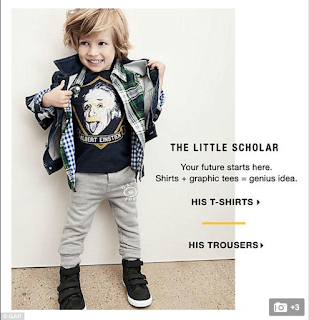For this post, I analyzed two advertisement images for GAP children's clothing. To analyze each ad, I answered seven guiding steps, (A - Answer): 1. What are your initial impressions of the advertisement? A) Happy kids, light color scheme, basic background, white blond kids, minimal text, yellow and pink as main colors. 2. List the keywords that are used in the ad. A) His, Hers, Trousers, Future, Genius, Logo, Talk. 3. What are the connotations and implied meaning of each keyword used? A) His is masculine, and Hers is feminine. Trousers imply that it this ad might take place in the United Kingdom. Genius implies cleverness. Logo implies a brand of some kind, (in this case GAP). Talk is used in the manner of gossip or a popular trend. 4. Next to each keyword, put a + for a positive charge or positive connotation, a - next to each negatively charged word, and nothing for a neutral word. Count up the charges. A) His ( ), H...


